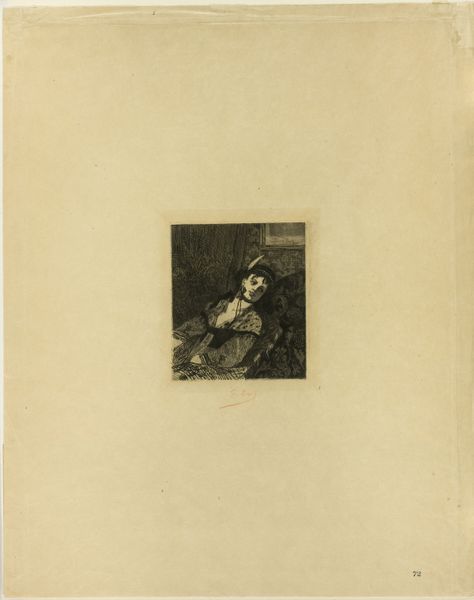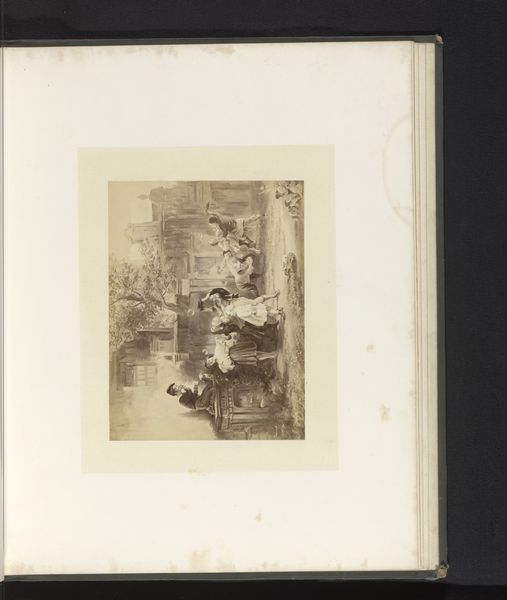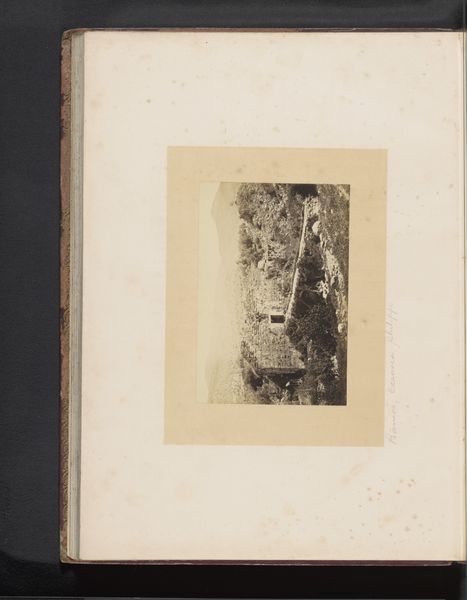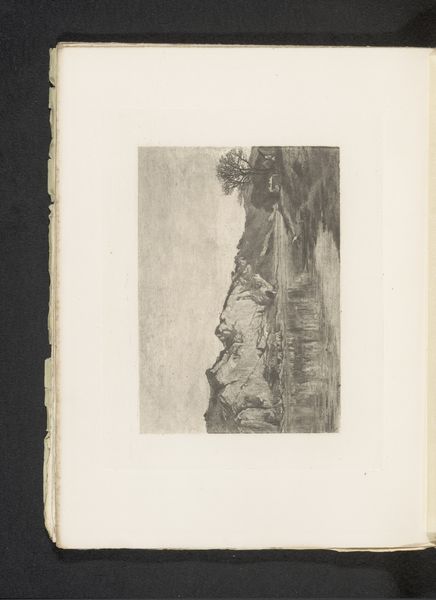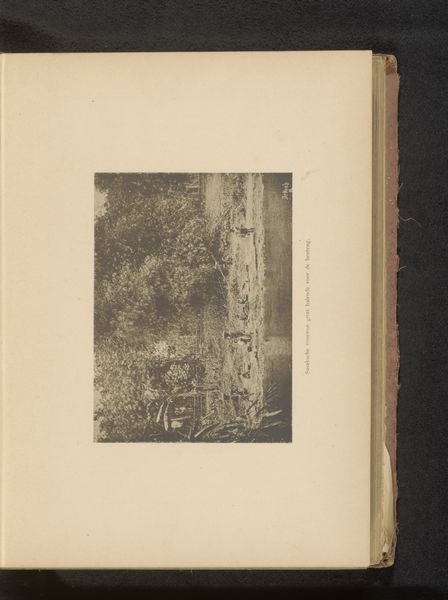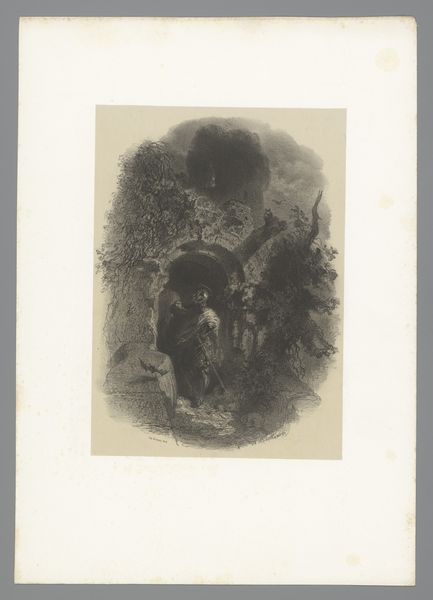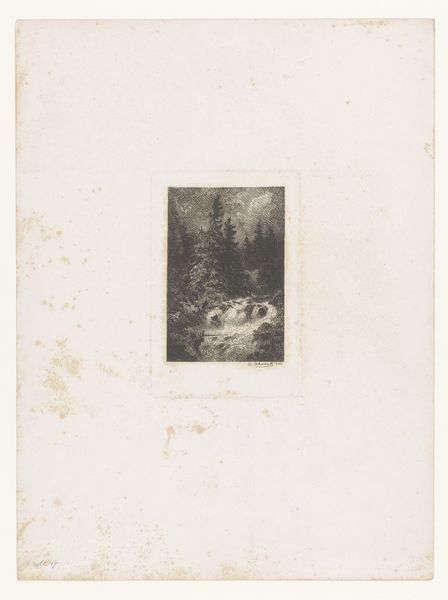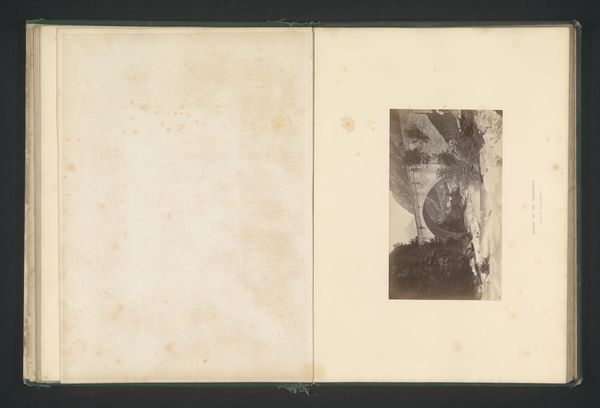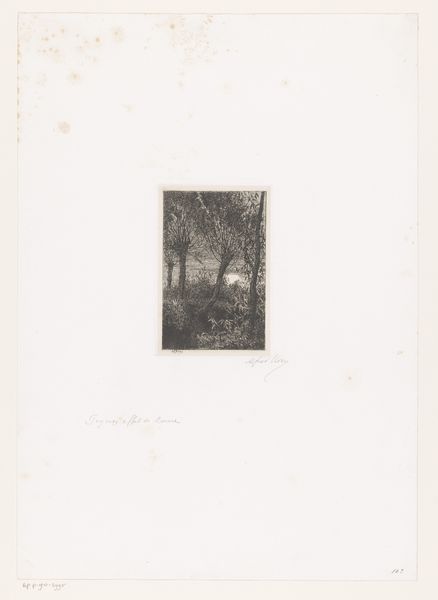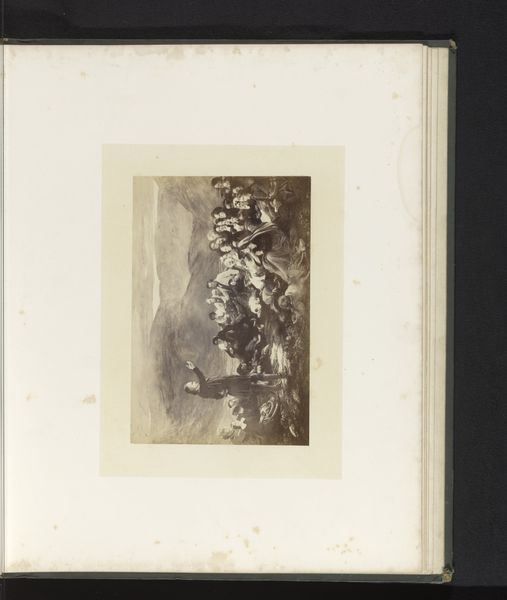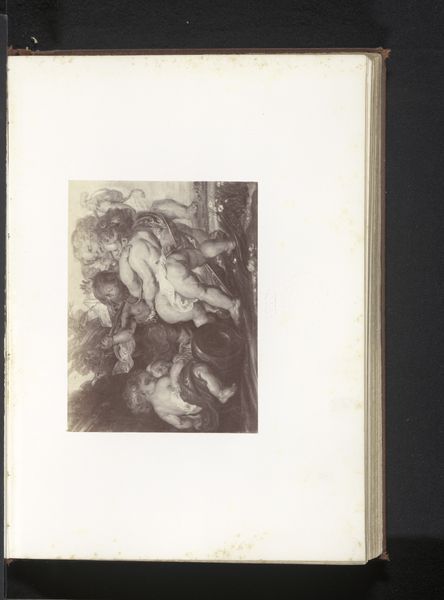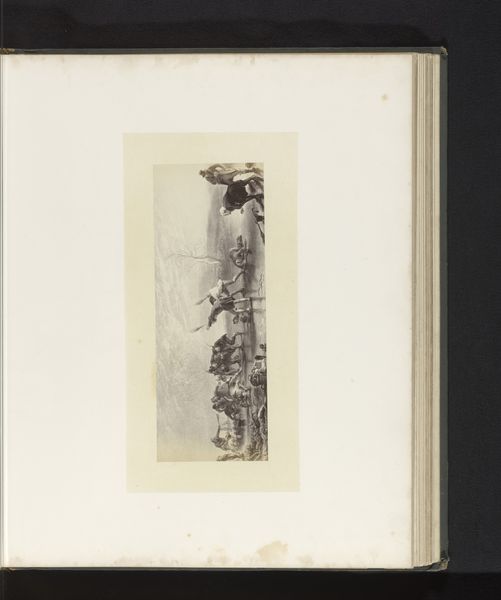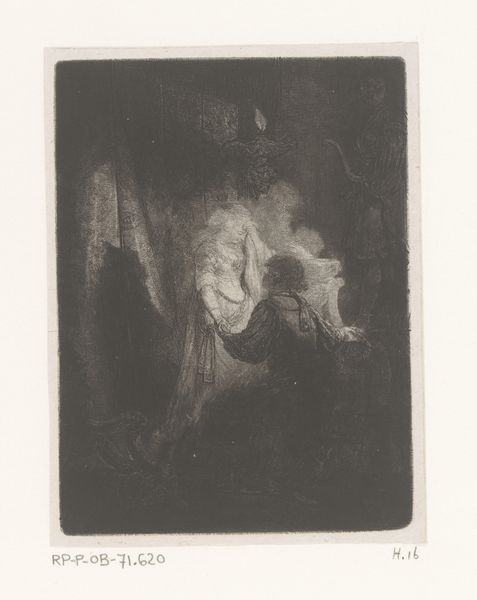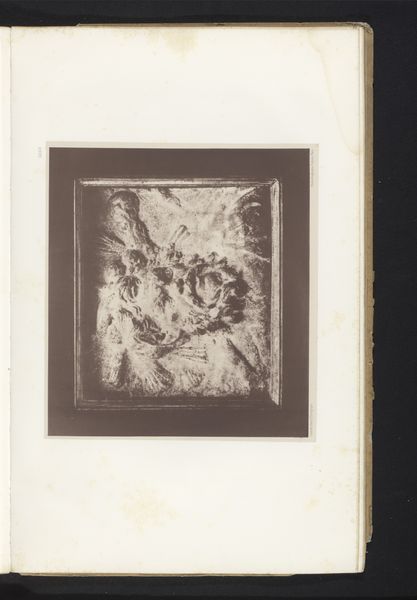
Fotoreproductie van de ets De vlucht naar Egypte (nachtstuk) door Rembrandt van Rijn c. 1910 - 1930
0:00
0:00
drawing, print, etching
#
drawing
#
narrative-art
#
dutch-golden-age
# print
#
etching
#
figuration
#
history-painting
Dimensions: height 130 mm, width 112 mm, height 190 mm, width 170 mm
Copyright: Rijks Museum: Open Domain
Curator: The overwhelming feeling I get from this piece is one of vulnerability. The dim lighting accentuates the uncertainty of their journey. Editor: Indeed. This is a photogravure dating roughly from 1910 to 1930, titled *Fotoreproductie van de ets De vlucht naar Egypte (nachtstuk) door Rembrandt van Rijn*, or, *Photographic reproduction of the etching The Flight into Egypt (nocturne) by Rembrandt van Rijn.* What you're seeing here is a reproduction of Rembrandt’s famous etching from 1654. As you know, Rembrandt was a master of light and shadow, and this image truly highlights this. Curator: The way the figures huddle together, illuminated by only a small lamp, speaks volumes about their desperation. This print is fascinating from a socio-political lens—Rembrandt's works are now themselves icons and this reinterpretation asks us to examine the cultural values associated with them over time. This speaks to larger issues of preservation, artistic license, and perhaps the very concept of authenticity within visual art itself. Editor: I would add, to focus on formal qualities of the original artwork, that Rembrandt was incredibly skilled at using light and dark to create mood and drama. In particular, in the etching reproduced here, Rembrandt employs a stunning economy of line and shadow. The scene contains just a few key elements—Mary, Joseph, the Christ Child, and the donkey—but the arrangement is masterfully calibrated. Notice the placement of the figures, drawing your eye towards the light source that reveals their expressions of trepidation. Curator: Considering that Rembrandt lived in a time of religious conflict and upheaval, how do you feel his decisions about representation—as seen in this particular depiction of the Holy Family—spoke to or diverged from the popular, often glorified portrayals of such themes? Editor: That's where I find this later reproduction fascinating. It’s both homage and act of documentation, in a way. And I’d emphasize that as viewers we aren't able to engage with the direct, indexical touch of Rembrandt. The semiotic reading is inherently complicated! But I would come back to what it is you suggested to start with. Curator: The vulnerability? Agreed. It persists even in this reproduction. Editor: And as we move through the gallery, consider the social, economic, and political conditions within which reproductions like this came into existence.
Comments
No comments
Be the first to comment and join the conversation on the ultimate creative platform.
